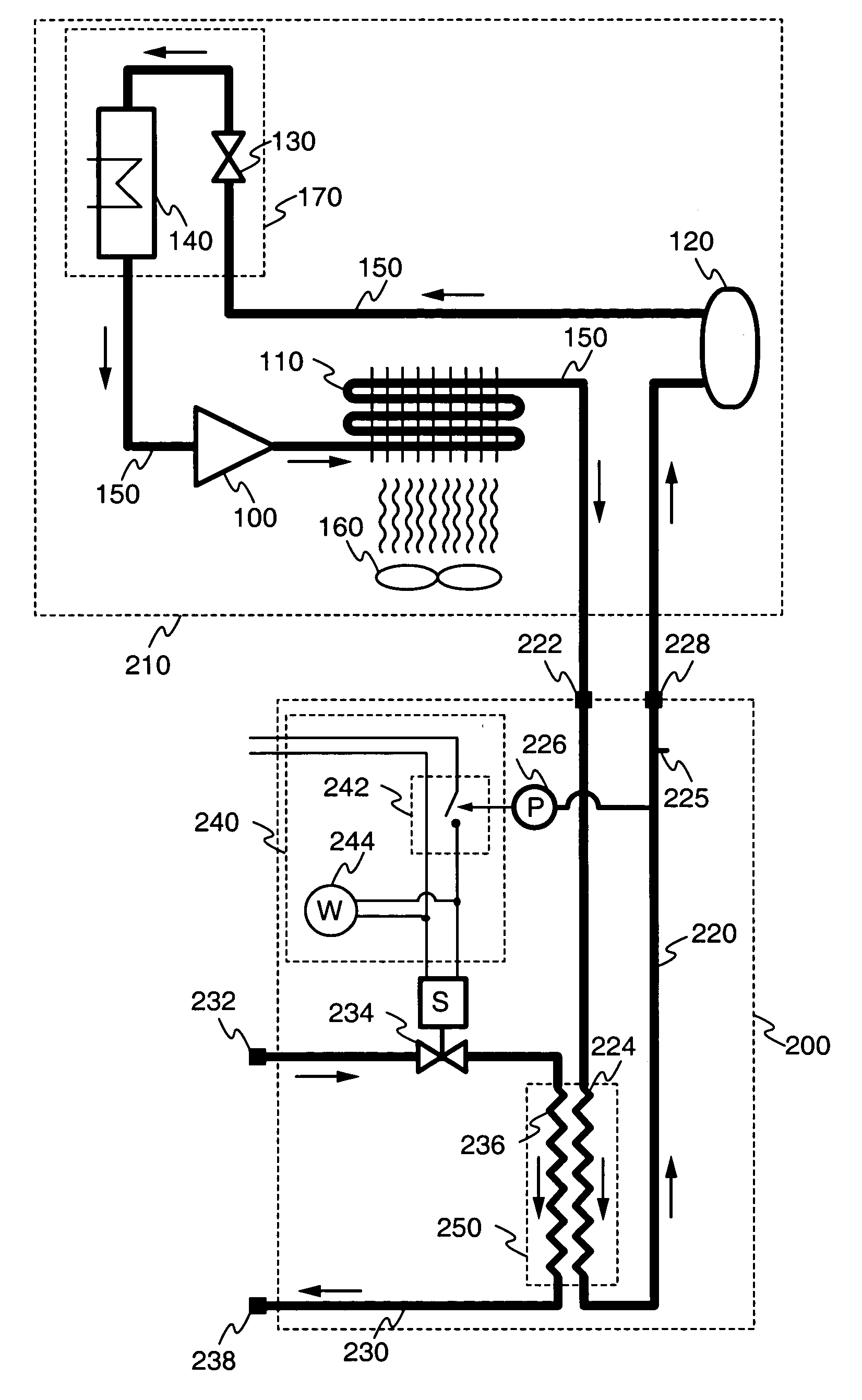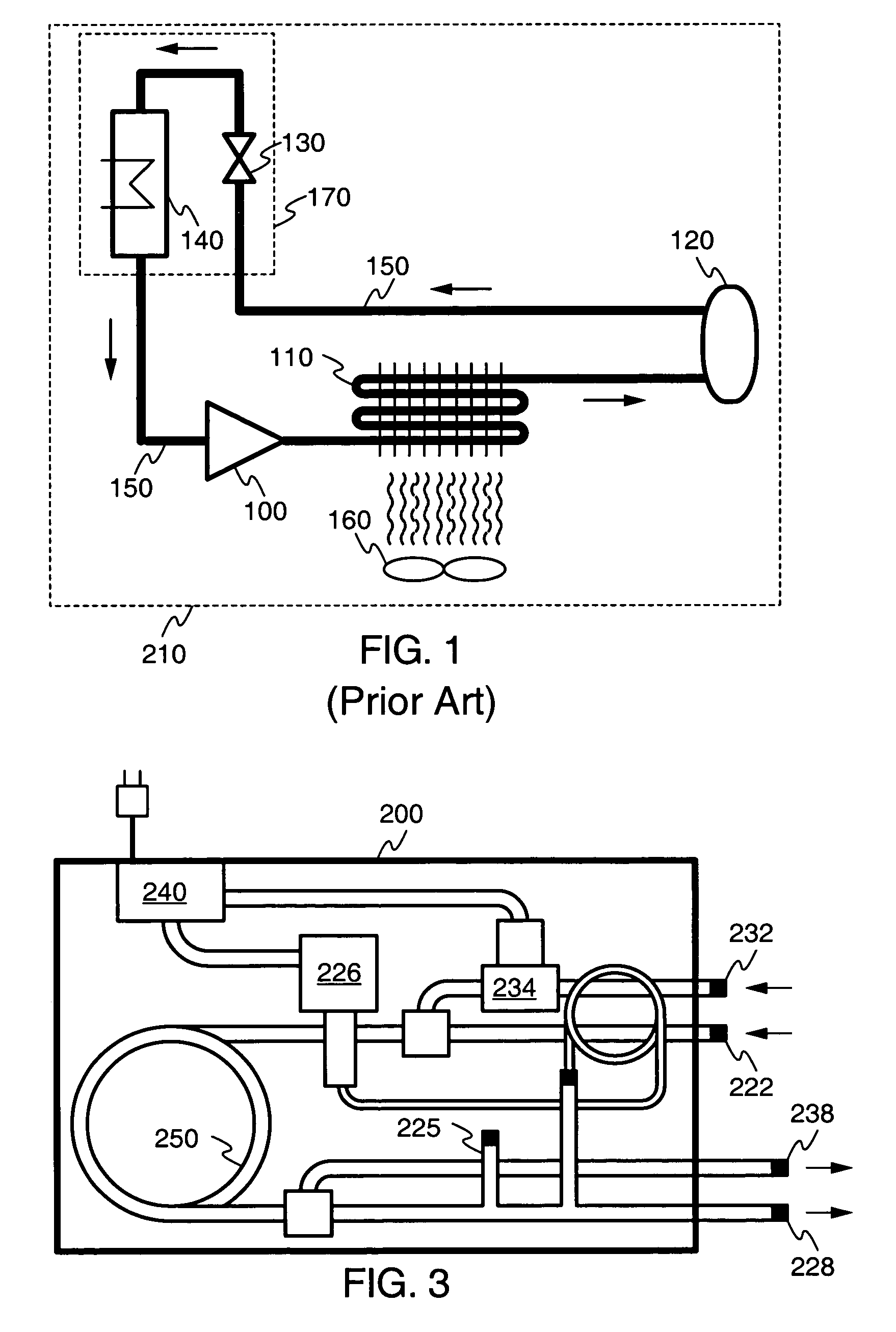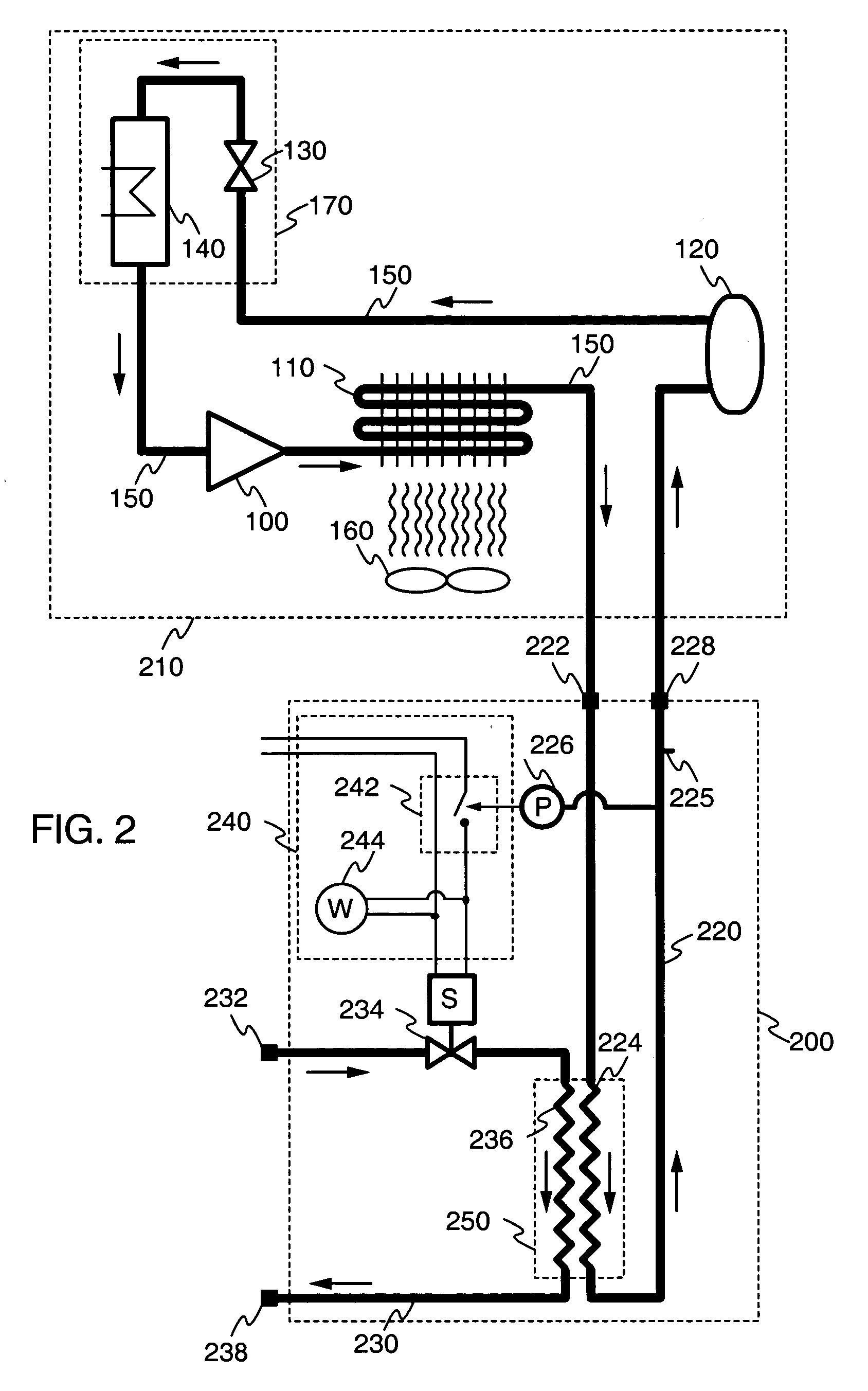Adaptive auxiliary condensing device and method
a technology of auxiliary condensers and condensers, which is applied in the field of refrigeration systems, can solve the problems of consuming more energy, reducing the cooling capacity of the evaporator, and shortening the life of the compressor, so as to achieve safe refrigeration temperatures, convenient installation, and maintain safe refrigeration temperatures
- Summary
- Abstract
- Description
- Claims
- Application Information
AI Technical Summary
Benefits of technology
Problems solved by technology
Method used
Image
Examples
Embodiment Construction
Particular embodiments of the present invention will now be described in detail with reference to the drawing figures. The purpose and function of the present invention is best understood by first reviewing the structure and operation of a conventional air-cooled refrigeration system, as illustrated in FIG. 1. The system includes the following components connected in series to form a closed cycle: a compressor 100, air-cooled condenser 110, receiver 120, expansion valve130, and evaporator 140. These components are connected by a refrigerant fluid line 150. Optionally, a fan 160 may be associated with air-cooled condenser 110. The system may be understood as being divided by the compressor 100 and expansion valve 130 into a high-pressure portion and a low-pressure portion. The high-pressure portion includes the condenser 110 and receiver 120, while the low-pressure portion includes the evaporator 140.
In operation, a gaseous refrigerant fluid enters the compressor 100 which increase...
PUM
 Login to View More
Login to View More Abstract
Description
Claims
Application Information
 Login to View More
Login to View More - R&D
- Intellectual Property
- Life Sciences
- Materials
- Tech Scout
- Unparalleled Data Quality
- Higher Quality Content
- 60% Fewer Hallucinations
Browse by: Latest US Patents, China's latest patents, Technical Efficacy Thesaurus, Application Domain, Technology Topic, Popular Technical Reports.
© 2025 PatSnap. All rights reserved.Legal|Privacy policy|Modern Slavery Act Transparency Statement|Sitemap|About US| Contact US: help@patsnap.com



